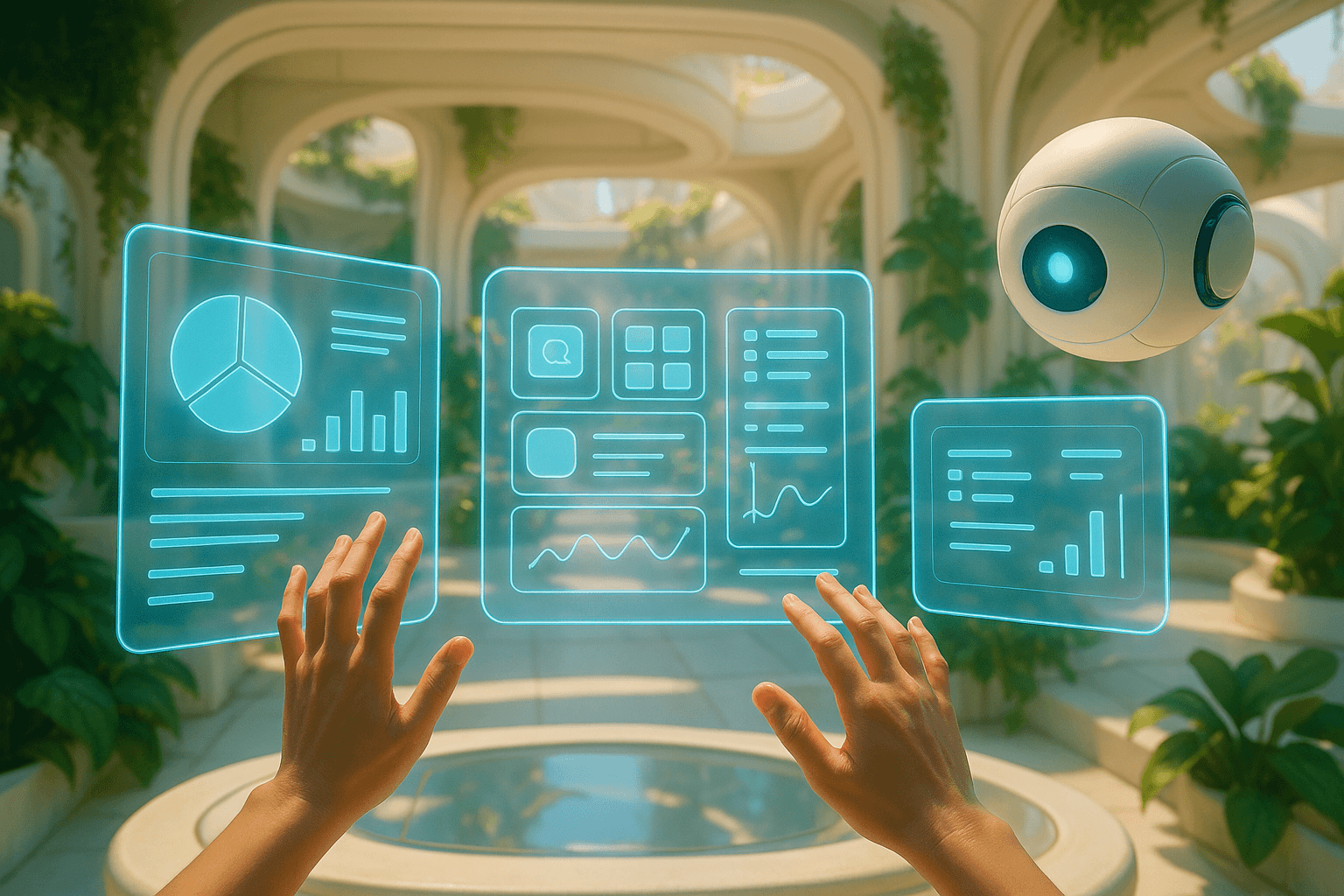
The interface is undergoing a structural evolution.
Not fading away, but transforming into something more ambient, embodied, and intelligent. Spatial computing and artificial intelligence are not just emerging trends; together, they are fundamentally rewriting how humans interact with information, environments, and each other.
At Polyform, we operate at the edge of this shift, building frontier products where spatial computing and AI converge. Here is what we are seeing from the front lines, and what we believe comes next.

Spatial Computing Shatters Flat UI Assumptions
Spatial computing, through platforms like Apple Vision Pro, Meta Quest, and mobile AR, lifts digital content off static screens and situates it in the user’s physical reality. The old model of glass rectangles filled with buttons and cards is no longer sufficient.
Key shifts spatial computing introduces:
- Interfaces become volumetric and persistent within real-world space.
- Interaction inputs become multi-modal: gaze tracking, hand gestures, voice commands, environmental awareness.
- Context becomes dynamic: user location, physical surroundings, body posture, and attention state all modify interaction possibilities.
Spatial UX design demands operating across four dimensions: x, y, z, and time, accounting for physical ergonomics, attention dynamics, and social context.

AI Turns Interfaces into Adaptive Systems
Simultaneously, AI is converting interfaces from static affordance collections into adaptive, collaborative systems.
Key capabilities AI introduces:
- Intelligent inference: systems can process ambiguous inputs, incomplete commands, and emergent user goals.
- Proactive adaptation: interfaces evolve in real-time to anticipate needs, streamline workflows, and offer context-aware assistance.
- Non-linear interaction paths: instead of rigid flows, AI-driven interfaces offer branching possibilities guided by real-time understanding.
This transition redefines the interface from a control mechanism into a semi-autonomous partner in human action.

The Power of Spatial Computing and AI Together
Where spatial computing and AI converge, the shift is exponential rather than additive.
Emergent capabilities include:
- Situated Intelligence: AI agents perceive and reason about the real-world physical environment, not just virtual models.
- Embodied Interaction: Users engage through natural modalities—moving, speaking, gesturing—without feeling bound to device constraints.
- Predictive Environments: Interfaces proactively adjust based on spatial context, behavioral patterns, and inferred emotional states.
Example use cases:
- A productivity workspace that rearranges virtual tools based on task patterns and attention focus.
- AI companions that appear contextually in physical environments to assist without interrupting.
- Retail environments where AI-enhanced spatial displays personalize offerings in real time based on user proximity and gestures.
This is not speculative fiction. It is already in early production across leading labs and studios.

New Interface Design Principles for Spatial-AI Systems
To design for this convergence, traditional UX heuristics must evolve.
At Polyform, our frontier principles include:
- Minimum Visible Interface: Surface only necessary elements in user focus zones. Otherwise, remain ambient to preserve cognitive clarity.
- Human-Led Agency: Always privilege user control, with AI suggestions as opt-in augmentations rather than mandatory paths.
- Explainable AI Behavior: Make AI reasoning, confidence, and data sources transparent to build and maintain trust.
- Persistent Spatial Anchoring: Ensure virtual content behaves consistently relative to physical space across sessions.
- Contextual Fluidity: Interfaces must detect and adapt to shifts in user task, attention, and environment without manual intervention.
In this new paradigm, interfaces must feel natural, trustworthy, and responsive—not just functional.

The Future of Interface is Spatial, Intelligent, and Human-Centered
Spatial computing and AI are not siloed technology domains. They are converging into the next dominant human-machine interaction layer.
Those who master this convergence will not just ship better apps. They will invent entirely new interaction categories and redefine user expectations.
At Polyform, we help ambitious teams design and build products at this intersection—turning abstract future trends into tangible, real-world experiences.
If you are ready to move beyond flat screens and passive systems to build truly adaptive, human-centered AI spatial products, we are ready to help you lead.
Thanks for joining us!
Now check your spam folder to secure your newsletter
More thoughts
Hire Polyform and bring the power of design to your startup.
Collaborate with Polyform to bring your big idea to market faster, better, & stronger.




